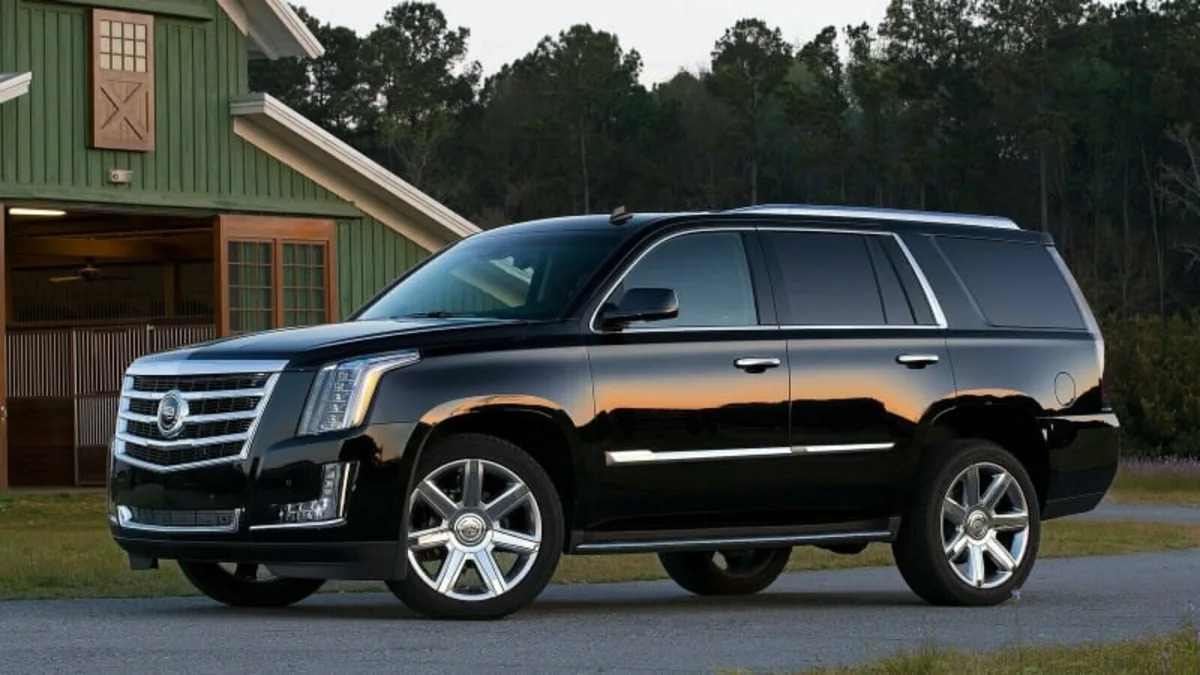As cars get bigger, so do the wheels that they ride on. This trend will continue in the coming years, according to General Motors, and we'll eventually reach a point where 20-inch alloys (which are twice as big as the steelies on an original Mini) will be considered comically and undesirably tiny.
Speaking on the Brembo Red podcast, General Motors design boss Michael Simcoe pointed out 18-inch wheels are considered small by 2019 standards. Rewind to 2009, and finding 18-inchers required walking into a luxury brand's showroom, or opening an aftermarket company's catalog. Simcoe — who notably styled the 2015 Chevrolet Bolt concept — believes this trend will continue.
"We're headed towards 24- and 26-inch wheels," he predicted. The Cadillac Escalade (pictured) appears on the growing list of new cars available with 22-inch wheels; the second-generation Audi A7 is another. While adding four additional inches of metal sounds alarmingly donk-like, stylists will hopefully tweak the proportions of the wheel wells to accommodate such big alloys, so the end result will look cleaner and more coherent than merely dropping a 1980s Chevrolet Monte Carlo on 26s.
Big wheels with an open design put the brakes out in the open, which creates an additional challenge for designers; they need to make the braking system look good. This means it can't be too small, because nine-inch rotors would look silly behind 26-inch wheels, and they can't be too basic. Many sports car manufacturers give buyers the option of paying for painted brake calipers, and this practice will spread to other segments if 24- and 26-inch wheels begin appearing on options lists. Making closed wheels is a solution around this, and Simcoe explained the design will vary from car to car.
The trend towards bigger wheels is one that electric car manufacturers will have a difficult time keeping up with. Broadly speaking, battery-powered models return better driving range when they're rolling on smaller wheels. The Environmental Protection Agency (EPA) carried out tests which showed motorists who order a Tesla Model 3 with the optional 20-inch alloys lose 23 miles of range.
Chassis engineers will have additional hurdles to clear, too, as larger wheels are often wrapped by low-profile tires, which compromise ride quality over rough terrain. But suspension systems are becoming more advanced, and automakers have shown the right amount of technology can even make big-wheeled cars extremely comfortable. After spending time in a Lincoln Aviator fitted with 22-inch wheels, Autoblog concluded it "soaked up the gnarled pavement around Napa Valley with no nervousness over smaller bumps, or impact harshness over bigger ones."


Sign in to post
Please sign in to leave a comment.
Continue